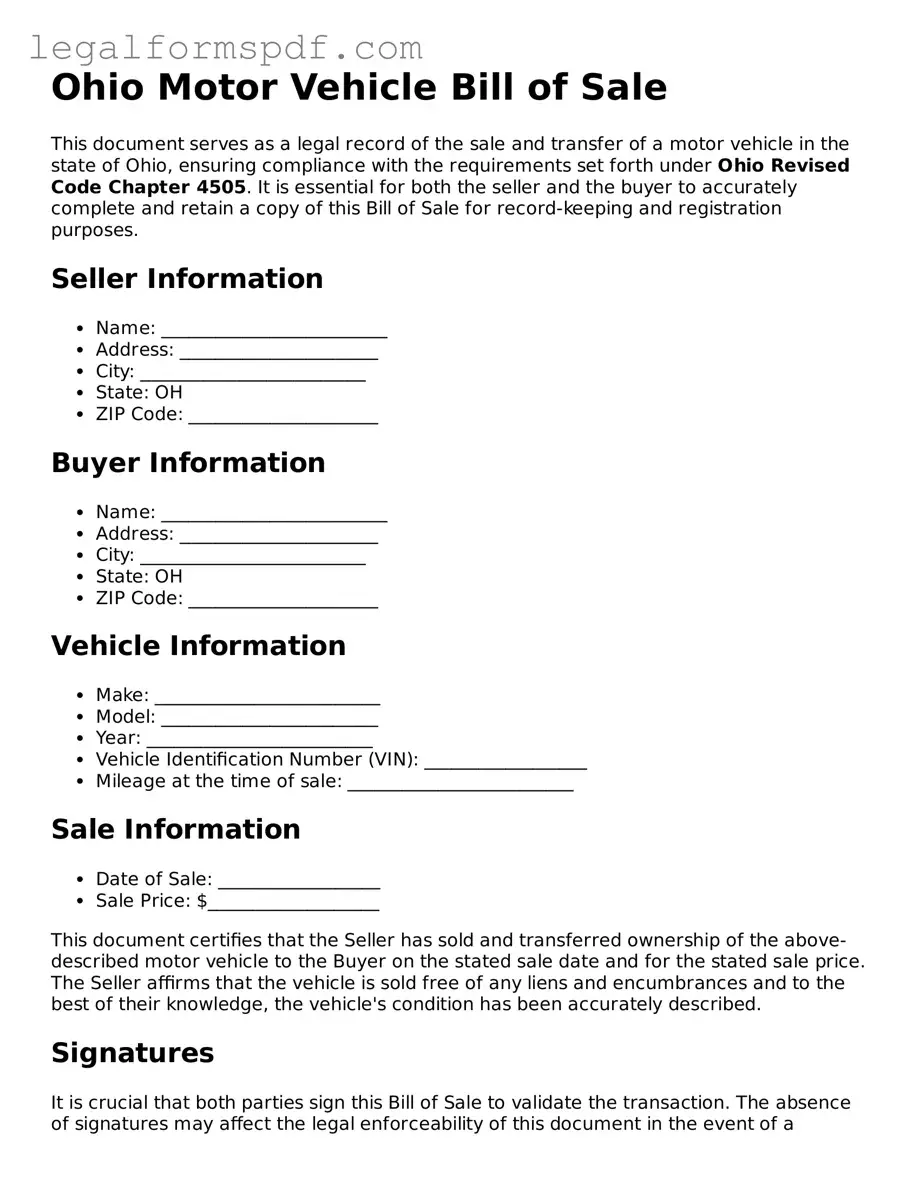What is an Ohio Motor Vehicle Bill of Sale form?
An Ohio Motor Vehicle Bill of Sale form is a document that records the transfer of ownership of a vehicle from one party, the seller, to another, the buyer. It acts as evidence of the transaction and includes details such as the vehicle’s make, model, year, vehicle identification number (VIN), the purchase price, and the date of sale. This form plays a critical role in the buying and selling process in Ohio, ensuring that the transfer is documented and legal.
Do I need to notarize the Ohio Motor Vehicle Bill of Sale form?
In Ohio, notarizing the Motor Vehicle Bill of Sale form is not a mandatory requirement for it to be considered valid. However, having the document notarized can add an extra layer of authenticity and may help protect against legal issues or disputes in the future. It's recommended to check with local regulations or consult with a legal professional to understand the best practices in your specific situation.
Is the Ohio Motor Vehicle Bill of Sale form enough to register a vehicle?
No, the Ohio Motor Vehicle Bill of Sale form alone is not sufficient for registering a vehicle. While it is a crucial document for proving ownership transfer, the buyer must present additional documents to the Ohio Bureau of Motor Vehicles (BMV) to complete registration. These include the vehicle title, proof of insurance, valid identification, and payment for registration fees. The Bill of Sale complements these requirements by providing detailed information about the transaction.
What information is required on an Ohio Motor Vehicle Bill of Sale form?
The Ohio Motor Vehicle Bill of Sale form should include specific details to ensure its validity. The required information typically encompasses the seller's and buyer's full names and addresses, the vehicle's make, model, year, VIN, the sale price, the sale date, and signatures from both parties involved. Clear and accurate information helps to prevent misunderstandings and legal complications.
Can I create my own Ohio Motor Vehicle Bill of Sale form?
Yes, you are allowed to create your own Ohio Motor Vehicle Bill of Sale form. It’s vital that the document contains all the necessary information, such as the vehicle details, sale price, and parties' information, to be legally binding. While templates are available online, ensuring that your form meets all legal requirements in Ohio is important. Consulting with a legal professional or utilizing an officially recognized template can help in crafting a valid document.
What should I do after completing the Ohio Motor Vehicle Bill of Sale form?
After completing the Ohio Motor Vehicle Bill of Sale form, both the buyer and the seller should keep a copy for their records. The buyer will need the form, along with other necessary documents, to register the vehicle under their name at the Ohio BMV. Meanwhile, it serves as proof of release of liability for the seller. It's also wise to inform your insurance company about the sale and update or cancel your policy accordingly.
